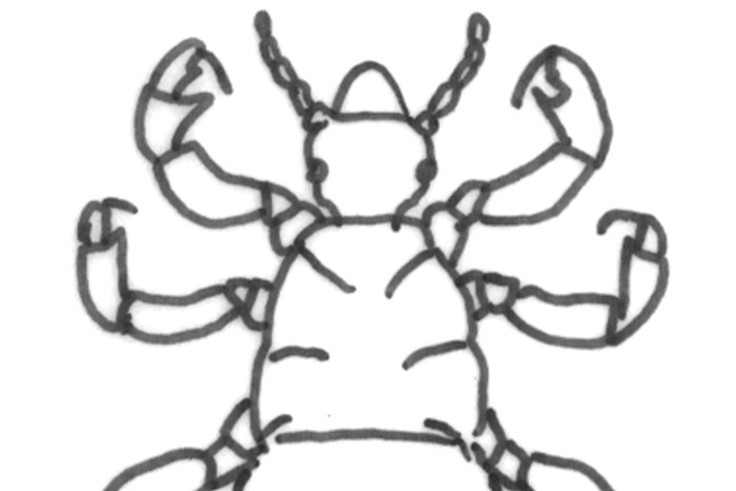Facts about body lice
Last update
Body lice (Pediculus humanus) are one of three lice types that can live on humans. The other two are head lice and pubic lice. Body lice keep mostly to clothes and move on to the body to suck blood. The bites itch.
In the past, body lice were very common. They can survive on people who rarely or never change into clean clothing. They are very rare in Norway today. In contrast, body lice are still common in parts of Africa, Asia, Central and South America.
How do body lice live?
Body lice are similar to head lice, but slightly larger, 2.5 to 3.6 mm. They mainly stay in clothing, especially in T-shirts or shirts, and sometimes in body hair. They are never found in head hair.
The eggs, often many together, are stuck with a secretion to fabric, often in the seams. Lice are most often found here. Few eggs attach to body hair. Body lice lay twice as many eggs as head lice, approximately 180 eggs during their adult life of 25 days.
The development time of body lice from egg to adult is like head lice, 20 days. If clothes with body lice are only used a few hours each day, development time will be longer. Body lice can be abundant if they live under optimal conditions. One person was reported to have 30,000 body lice, but this is not common.
As soon as the nymph (offspring) hatches, it needs blood. It will suck blood every five hours.
How are body lice transmitted?
Body lice are spread by physical contact or by repeatedly using the same clothes. Lice do not thrive on people with normal good hygiene who change and wash clothes in warm water.
Body lice are a problem in countries where many people live closely together under difficult conditions without changing clothes, e.g. in emergency situations such as war zones and disaster areas.
Can body lice transmit diseases?
Body lice can transmit epidemic typhus, relapsing fever and trench fever. This occurs almost exclusively in poverty-stricken war zones and disaster areas.
Getting rid of body lice
Under normal circumstances, body lice can be removed by bathing and changing clothes. Lice and eggs in clothing will die if the clothes are not used. All stages that are not in contact with the body, except the eggs, will die within 1-2 days at ambient temperature. Eggs may take 1–2 weeks to hatch, eggs on body hair hatch within 10 days. Lice that are on the body can be brushed or washed away.
Lice and eggs in clothing can be killed quickly by heat or cold. Wash clothes with water above 60 º C, or put the clothes in the dryer at this temperature for at least 15 minutes. A few hours in the freezer will also kill lice and eggs. Body lice are also found in beds so bedding should also be washed.
In areas of the world where body lice occur most frequently, changing and washing clothes in hot water can be difficult. Use of insecticides may then be necessary.


